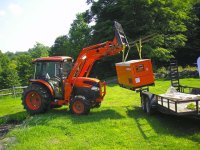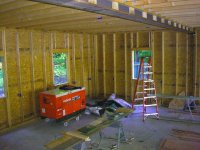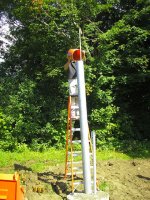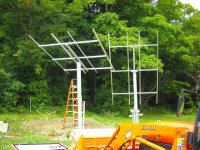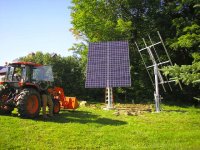hayden
Veteran Member
- Joined
- Sep 23, 2000
- Messages
- 2,328
- Location
- VT
- Tractor
- Kubota L5740 cab + FEL, KX121, KX080, Deere 6120M
Hi Everyone,
Thanks for the replies.
FLHayman - your system sounds very much like my 1st generation system. I suspect over time you'll expand yours, if nothing elses for the fun of it. What amazes me is how much you can do on a few hundred watts. At this point our place has all the features of a "normal" house and we are typically consuming about 250W. If it goes over 500W, I wonder what's going on.
Just think how much electricity (and fuel that creates it) we'd save as a nation if any measurable portion of the homes in the US really focused on their electric usage like you are forced to when you are off-grid.
The Prosine looks to me like a real nice unit. I don't recall - does it include a charger too or is it just an inverter? I also heard a rumor that Xantrex was discontinuing it.
Tommu56 - thanks for the report on the MX and FX. I was refering to audible noise, but you've caused me to wonder whether I interpreted the original questions correctly. How many watts of panels do you have on your MX? I've got just under 700 on mine and the fan doesn't run. I've read a lot of reports of fan replacements on systems where it does run a lot.
Thanks for the replies.
FLHayman - your system sounds very much like my 1st generation system. I suspect over time you'll expand yours, if nothing elses for the fun of it. What amazes me is how much you can do on a few hundred watts. At this point our place has all the features of a "normal" house and we are typically consuming about 250W. If it goes over 500W, I wonder what's going on.
Just think how much electricity (and fuel that creates it) we'd save as a nation if any measurable portion of the homes in the US really focused on their electric usage like you are forced to when you are off-grid.
The Prosine looks to me like a real nice unit. I don't recall - does it include a charger too or is it just an inverter? I also heard a rumor that Xantrex was discontinuing it.
Tommu56 - thanks for the report on the MX and FX. I was refering to audible noise, but you've caused me to wonder whether I interpreted the original questions correctly. How many watts of panels do you have on your MX? I've got just under 700 on mine and the fan doesn't run. I've read a lot of reports of fan replacements on systems where it does run a lot.
